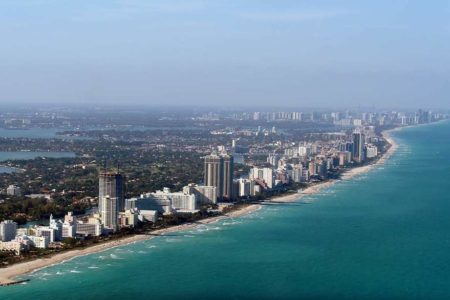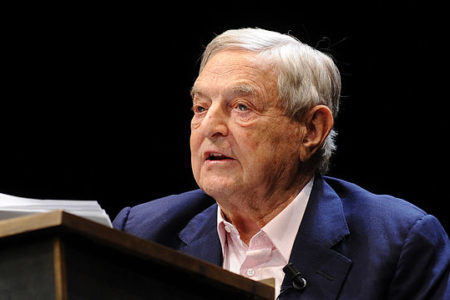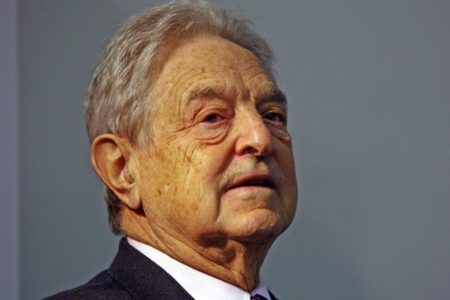 In recent days, President Trump has set off a peculiar debate about American federalism. It revolves around the question of just who has the authority to end the lockdowns in force in most of the country to fight the novel coronavirus. And it has revealed some serious confusion about both federalism and the public health challenge we face.
In recent days, President Trump has set off a peculiar debate about American federalism. It revolves around the question of just who has the authority to end the lockdowns in force in most of the country to fight the novel coronavirus. And it has revealed some serious confusion about both federalism and the public health challenge we face.
In a Twitter post on April 13, Trump insisted that the power to end social distancing requirements lies with him: “It is the decision of the President, and for many good reasons.” In that afternoon’s White House news briefing, he pressed the point: “The president of the United States calls the shots,” he said, and governors “can’t do anything without the approval of the president.”
Governors quickly balked. New York’s Andrew M. Cuomo (D) complained that Trump seemed to think he was America’s “king.” Pennsylvania’s Tom Wolf (D) was more restrained but not less clear. “Seeing as how we had the responsibility to close the state down, I think we probably have the primary responsibility for opening it up,” Wolf said.
Strictly speaking, Wolf was right. Although the president could use the leverage of federal aid to pressure governors, the states are ultimately sovereign over public health, and only they can exercise the kind of police powers involved in enforcing closures and other restrictions. The Supreme Court has repeatedly made clear that the federal government cannot commandeer state officials to enforce its edicts.
But the whole dispute betrays a serious misunderstanding of the situation the country is in. The fact is that neither the president nor the governors could reopen the economy with the stroke of a pen. Nothing they could do would, by itself, persuade people to return to work, send their kids to school or make travel plans. Americans are worried about getting sick. They began canceling plans well before most states took major actions, and the confidence to get back to normal would require much more than the word of any politician.
In one recent poll, Gallup asked how soon respondents would “return to your normal activities” once restrictions were lifted. Only 20 percent said they would do so immediately. Seventy-one percent said they would “wait to see what happens with the coronavirus.” The only way to really reopen the economy is to make sure that what those people see is reassuring. And that can happen only if the federal government and the states cooperate to create the conditions for public confidence.
That simple reality can also clarify the character of American federalism. The purpose of America’s various layers of government is not to order people around. It is to help create and sustain the conditions in which people can lead free and flourishing lives.
In that cause, the federal government has some vital, enumerated responsibilities: for defense and the regulation of commerce, and for protecting people’s rights and securing their welfare. The states work within that framework to exercise a broader set of authorities. They are closer to the people, and so are entrusted with shaping the kind of polity their residents want, taking responsibility over public health, education and other facets of the common good. Local governments, though not as fully sovereign, can further enforce local preferences and priorities. The resulting system of government is something like a set of concentric rings, each protecting and enabling the next and all ultimately geared to enabling individuals, families and communities to thrive.
In this emergency, therefore, the federal government should want to enable the states to enable the public to feel secure enough to return toward normal life. That means drawing on a national well of expertise to propose some parameters for reopening. It means helping different regions of the country take the actions needed to meet those parameters, and keeping problems in one region from spilling into others. It means advancing research and treatment efforts to fight covid-19 in ways only our national government can. It means providing financial assistance to sustain the economy. And it means communicating all this clearly to the public.
The states must understand that their function is also ultimately an enabling role. They need to set, enforce and alter rules as circumstances change within the framework that the federal government helps them establish, and give people the confidence to venture toward normality.
Each level of government has its role and should be held accountable for performing it. But all these roles are ultimately supportive of the real decision-makers about when we can return to normal — the American people. Seeing that would help us avoid pointless arguments about who has all the power. And it would help us grasp the real challenge before us, and the actual character of our system of government.






Lynette Woodruff
Can you explain how the emergency declarations of both the president and all 50 states shifts some the powers and authorities?